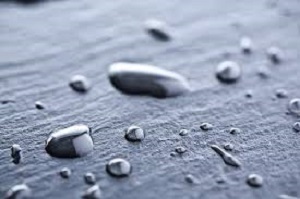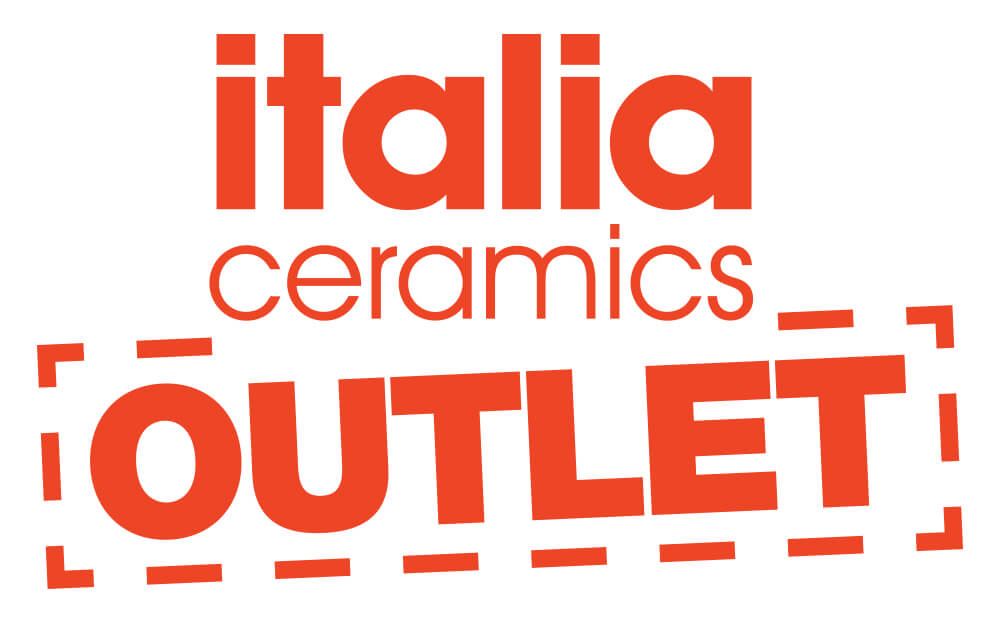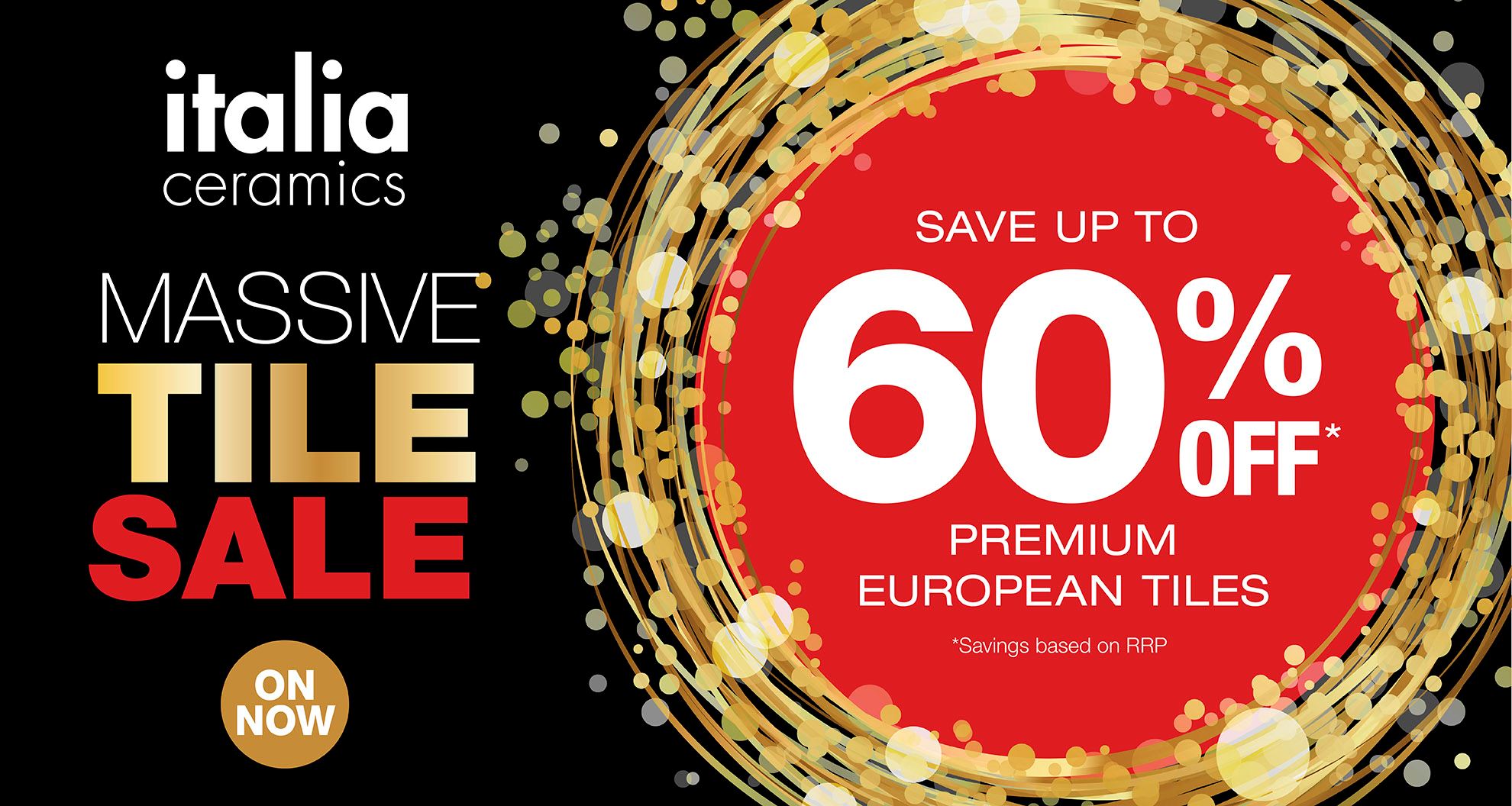Building or Renovating? Call now (08) 8465 4545
A-Z tile terms you need to know!
Abrasion Resistance:
Is the grade of a floor tile surface, with the ability to resist friction. This determines the type of wear in foot traffic from light residential traffic to high commercial traffic. These particular tests are undertaken by Australian Standard AS 4459-7 who classify the tiles into Groups. Group 1 light traffic - Group V in high traffic areas.

Body:
The term “full body tile” also known as “through-body tile”, refers to the colour on top of the tile that goes all the way through the entire tile. This type of tile is highly durable exuding strength and longevity wear.
Cap Tiles:
The term “cap tiles” is also identified as “bullnose tiles.” This particular tile is a trim, which features a rounded edge commonly used for outside corners and to finish off wall application. Two rounded edges are also a popular finish which is referred to as “double-bullnose tiles.”
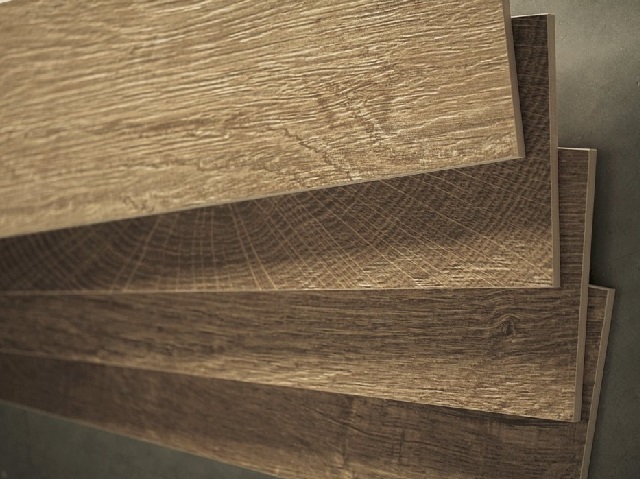
Crazing:
Crazing refers to fine cracks seen in the glaze of a tile. They can appear as one or two cracks and occasionally a fine web-like network of cracks (like in a ice cube.) Crazing sometimes resembles dirt or stains which is commonly misunderstood.
Dust-Pressed Tile:
Tiles are made by the compressing of fine delicate powder of raw materials in moulds before firing. This is a common way that “indoor tiles” are manufactured today.
Efflorescence:
Is a crystalline build-up which can appear on the surface of grout joints or unglazed tiles. It can look like a white powder or crust which is caused by moisture reacting to impurities in the grout (mortar.)
Finishes:
Finish is a common word design consultants at Italia Ceramics showroom refer to commonly. The finish refer to the texture or visual characteristic of a tile surface. For example, glazed tiles can be finished in a high gloss, satin or matt. In porcelain tiles, finish is refer to be either a natural, polished, semi-polished, honed or lapped. Other types of finishes we are starting to see in more tiles today are bush hammered, raised, embossed, dimpled, etched, scored and ribbed.
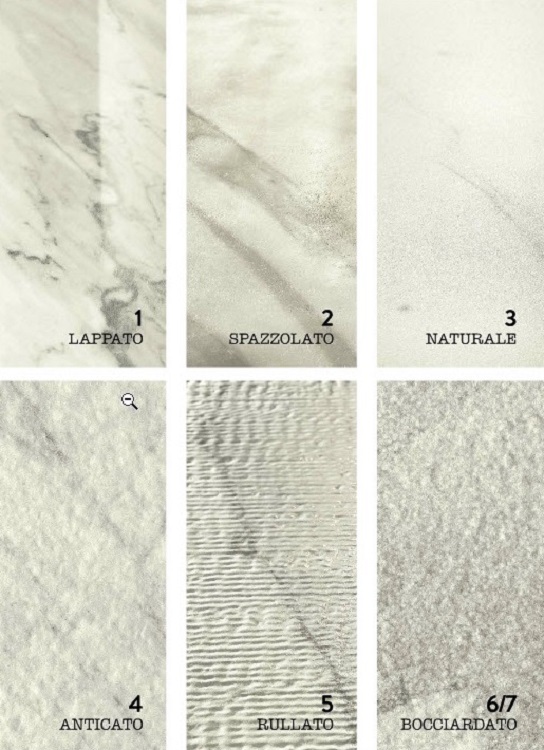
Glazed Porcelain:
With the latest technology porcelain tiles is now available glazed. A glaze is applied to the tile face on the product before firing, making this product the strongest on the market. The body of the tile is dense and hard wearing.
Honed Finish:
Is a satin-smooth finish with little or no gloss on the surface of the tile. This type of finish is quite a popular finish for commercial jobs.
Impact Resistance:
The ability of a ceramic tile to resist breakage - either throughout the body or as surface chipping - as the result of a heavy blow. In general, ceramic tile is not a resilient material and care should be taken to avoid dropping heavy or sharp objects on its surface. Glazed tiles are more susceptible to surface chipping than unglazed tiles.
Joint:
Joint refers to 3 different types of joints; expansion, grout, isolation and mortar.
Expansion Joint is the separation provided between adjoining parts of a structure to allow movement at stress points to prevent uncontrolled cracking.
Grout Joint is the space left between tiles to be filled with grout. This space may be extremely narrow or wider depending on the required installation and/ or its aesthetics.
Isolation Joint is the separation between adjoining parts of a vertical concrete structure designed to allow for relative movement in three directions.
Mortar Joint- is a joint composed of, or embedded in, cement mortar.
Klinker:
Klinker or also known as clicker, is a natural clay tile that is generally extruded with properties similar to red stoneware.
Lappato:
Is a semi-polished tile that retains elaborate techniques to achieve a polished tile surface. As stated by Australian Tile Council; High quality porcelain does not require any further treatment after polishing. Some lower density polished porcelain tiles must be sealed, depending on the manufacturer.
Marble:
Marble (metamorphic stone) has a very fine detail therefore texture, composition, variation in colour, grain structure and occasional pitting and veining are unreverent characteristic of natural stone.
Modular Format:
Combining different tile sizes is a popular trend, which may be described as modular. Generally, a mixture of sizes from the same tile series are laid together to create a more interesting pattern.
Non-Slip Tiles:
Non slip tiles also referred to as slip resistant tiles are tiles treated to prevent slipping either by adding an abrasive grit to the glaze or a texture to the design of the tile surface structure such as ribs, studs etc.
Onyx:
A translucent, generally layered, cryptocrystalline calcite with colours in pastel shades, commonly found in yellow, tan and green tones.
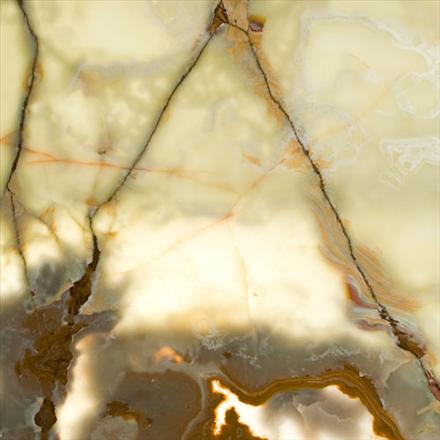
Porcelain Stoneware:
Porcelain stoneware (tiles) are fired over 1200-1300C where tiles reach full vitrification and are transformed into one solid, compact highly resistant body. Porcelain tiles are virtually impervious to damage, these dynamic and contemporary tiles are ideal for a plethora of spaces from kitchens to industrial floors. Porcelain tiles have a lower absorption rate to ceramic tiles with the ability to withstand frost conditions and no impact of fading from sunlight.
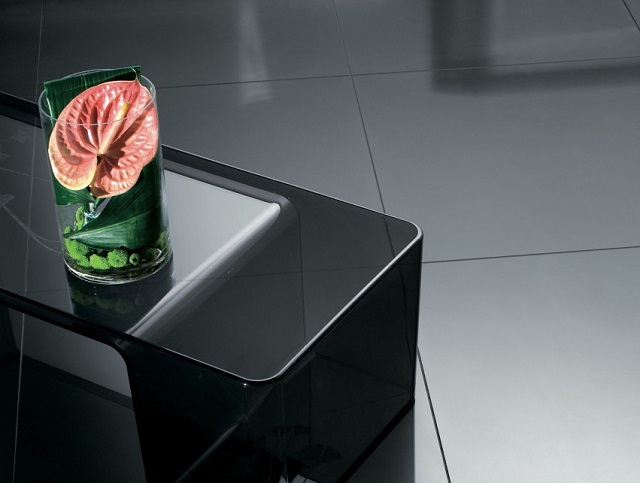
Quartz:
A common crystalline stone and a major component of granite.
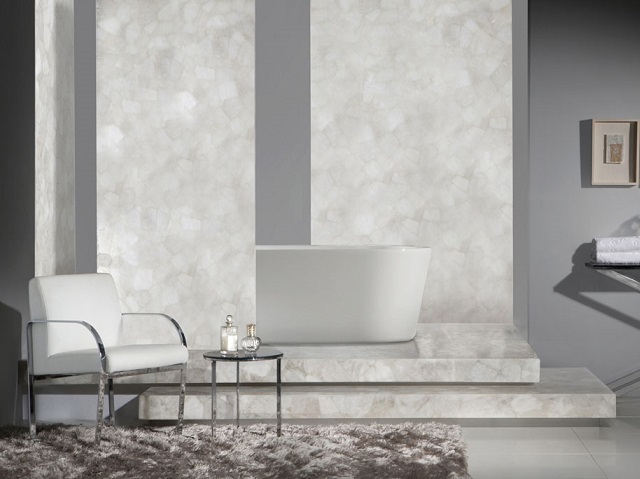
Rectified Tiles:
Rectified tiles are cut to size, trued and squared off, with 90 degree edges. Rectified tiles are generally installed with minimal grout lines.
Spazzolato:
Spazzolato is commonly known as a brush finish, is a process of brushing the surface to give the tile a textured yet smooth, more structured look.
Thermal Shock Resistance:
Ceramic tile’s ability to resist adjustment when subjected to rapidly fluctuating extreme temperatures.
Unglazed Tiles:
The condition of tiles that are left untreated after firing. Unglazed tiles derive their colour and texture from their raw materials or may be coloured by means of oxides dispersed throughout the body.
Vitrified tiles:
Vitreous tiles absorb less than 3 per cent moisture whereas fully vitrified tiles are made from fine particles and fired to high temperatures (1250º C) which results in a denser tile with extremely low porosity (moisture absorption of less than 0.5 per cent). Porcelain stoneware tiles are fully vitrified making a layer of glaze unnecessary for the tile to be impervious to water.
Water Absorption:
The quantity of water a tile can absorb expressed as a percent of the dry tile weight. High water absorption corresponds to a porous structure, while compact, vitrified structures feature low water absorption.
